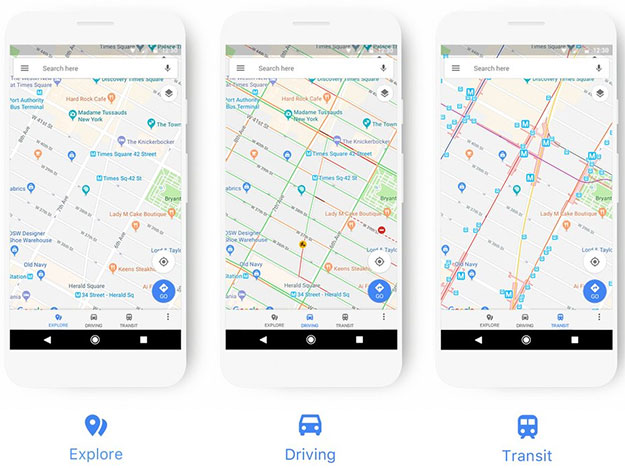Google Maps Gets A Fresh Coat Of Paint And Color Coded Points Of Interest System
Google Maps is now better than it was a month, week, or even a day ago. In a blog post, Google outlined some changes it made made to its maps program, including updates to Google Maps' driving, navigation, transit, and explore maps to better highlight the information it believes is most relevant to each experience, such as gas stations for navigation, train stations for transit, and so forth.

"The world is an ever-evolving place. And as it changes, Google Maps changes with it. As roads close, businesses open, or local events happen in your neighborhood, you’ll see it on Google Maps. When you schedule an event using Google Calendar, get a reservation confirmation in Gmail, or add a restaurant to your 'Want to Go' list, Google Maps reflects that too. Now, we’re updating Google Maps with a new look that better reflects your world, right now," Google said.
In addition to updated maps that highlight relevant spots in relation to how you are traveling, Google Maps has somewhat of a different look as well. Google updated the color scheme and added new icons to make it easier to quickly identify different types of points of interest (POI), such as churches, cafes, museums, or hospitals. Rather than identifying these types of places by symbol alone, they each now have a corresponding color.
"For example, if you’re in a new neighborhood and searching for a coffee shop, you could open the map to find the nearest orange icon (which is the color for Food & Drink spots)," Google explains.
Here is a cheat sheet of the new colors:

And here's how some of the icons look with the the new colors:

Not everyone will see the revised Google Maps experience right away. Google said it roll out the changes over the next few weeks, and not just into the standalone Google Maps app, but also products that incorporate Google Maps. These include Assistant, Search, Earth, and Android Auto.
As time goes on, the changes will be reflected in third-party apps, websites, and experiences that use Google Maps APIs.

"The world is an ever-evolving place. And as it changes, Google Maps changes with it. As roads close, businesses open, or local events happen in your neighborhood, you’ll see it on Google Maps. When you schedule an event using Google Calendar, get a reservation confirmation in Gmail, or add a restaurant to your 'Want to Go' list, Google Maps reflects that too. Now, we’re updating Google Maps with a new look that better reflects your world, right now," Google said.
In addition to updated maps that highlight relevant spots in relation to how you are traveling, Google Maps has somewhat of a different look as well. Google updated the color scheme and added new icons to make it easier to quickly identify different types of points of interest (POI), such as churches, cafes, museums, or hospitals. Rather than identifying these types of places by symbol alone, they each now have a corresponding color.
"For example, if you’re in a new neighborhood and searching for a coffee shop, you could open the map to find the nearest orange icon (which is the color for Food & Drink spots)," Google explains.
Here is a cheat sheet of the new colors:

And here's how some of the icons look with the the new colors:
Not everyone will see the revised Google Maps experience right away. Google said it roll out the changes over the next few weeks, and not just into the standalone Google Maps app, but also products that incorporate Google Maps. These include Assistant, Search, Earth, and Android Auto.
As time goes on, the changes will be reflected in third-party apps, websites, and experiences that use Google Maps APIs.

